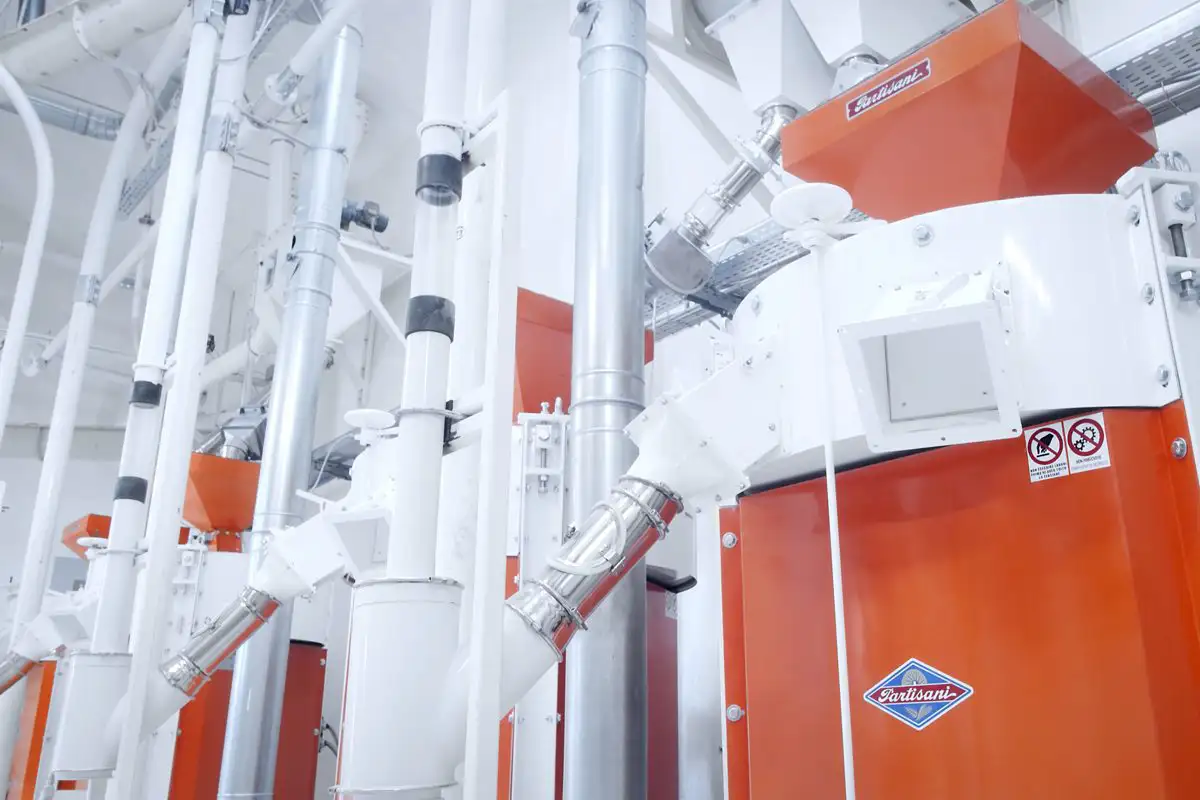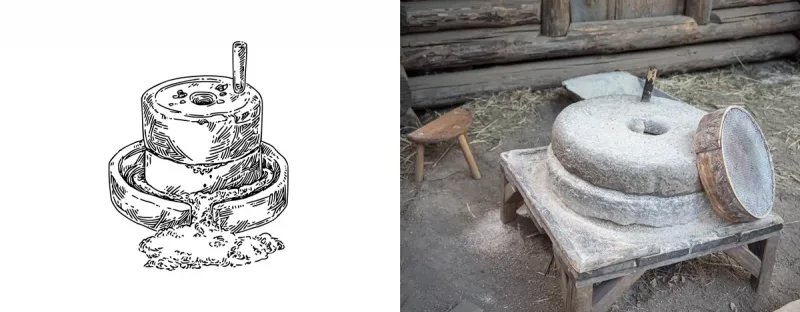Stone milling has been part of human history since ancient times, and it is still used today to obtain more “natural” and strong-tasting flours. Let's discover some of its secrets together.
Brief history of grinding
The processing of grains to make them better usable and digestible first passed through the use of mortars and stones, leading, around 1000 B.C., to the creation of the first millstones, driven by human or animal power.
But the most important achievements are reached with the next stages in the evolution of stone grinding: use of hydraulic power, wind and steam engines. At the end of the 18th century, thanks to the first hydraulic and steam-powered motorization systems, ancillary machines also became more “technological” and the first tumblers were born.
But the most important achievements are reached with the next stages in the evolution of stone grinding: use of hydraulic power, wind and steam engines. At the end of the 18th century, thanks to the first hydraulic and steam-powered motorization systems, ancillary machines also became more “technological” and the first tumblers were born.
Stone grinding
Our mill's stone grinding process follows ancient traditions: after several stages of selection and cleaning, during which we also use an optical sorter to discard foreign bodies and grains that are diseased or do not meet our standards, the grains are crushed between two large, hard, porous stones. The low speed of the moving stone wheel keeps the processing temperature low, allowing us to keep intact the valuable thermolabile trace elements in the grain: the vitamins, oils, enzymes and mineral salts.
These elements, which are mainly present in the wheat germ, cannot be removed during the stone milling process, which is unable to separate the various components of the grain, thus ensuring products with a larger grain size and more intense flavor.Precisely because of its property of retaining the nutrients and genuineness of the grain, this milling method is most widely used for ancient and organic grains, especially for making whole grain flours. However, it is possible to obtain type 2 and type 1 flours by means of the tumbler (or plansichter), which, depending on the size of the sieves inside it, allows a separation of bran and middlings.
Flours obtained through stone milling thus retain all the nutritional benefits of the grain and allow for a healthier diet richer in fiber and vitamins. A great choice to bring to your tables!
These elements, which are mainly present in the wheat germ, cannot be removed during the stone milling process, which is unable to separate the various components of the grain, thus ensuring products with a larger grain size and more intense flavor.Precisely because of its property of retaining the nutrients and genuineness of the grain, this milling method is most widely used for ancient and organic grains, especially for making whole grain flours. However, it is possible to obtain type 2 and type 1 flours by means of the tumbler (or plansichter), which, depending on the size of the sieves inside it, allows a separation of bran and middlings.
Flours obtained through stone milling thus retain all the nutritional benefits of the grain and allow for a healthier diet richer in fiber and vitamins. A great choice to bring to your tables!

